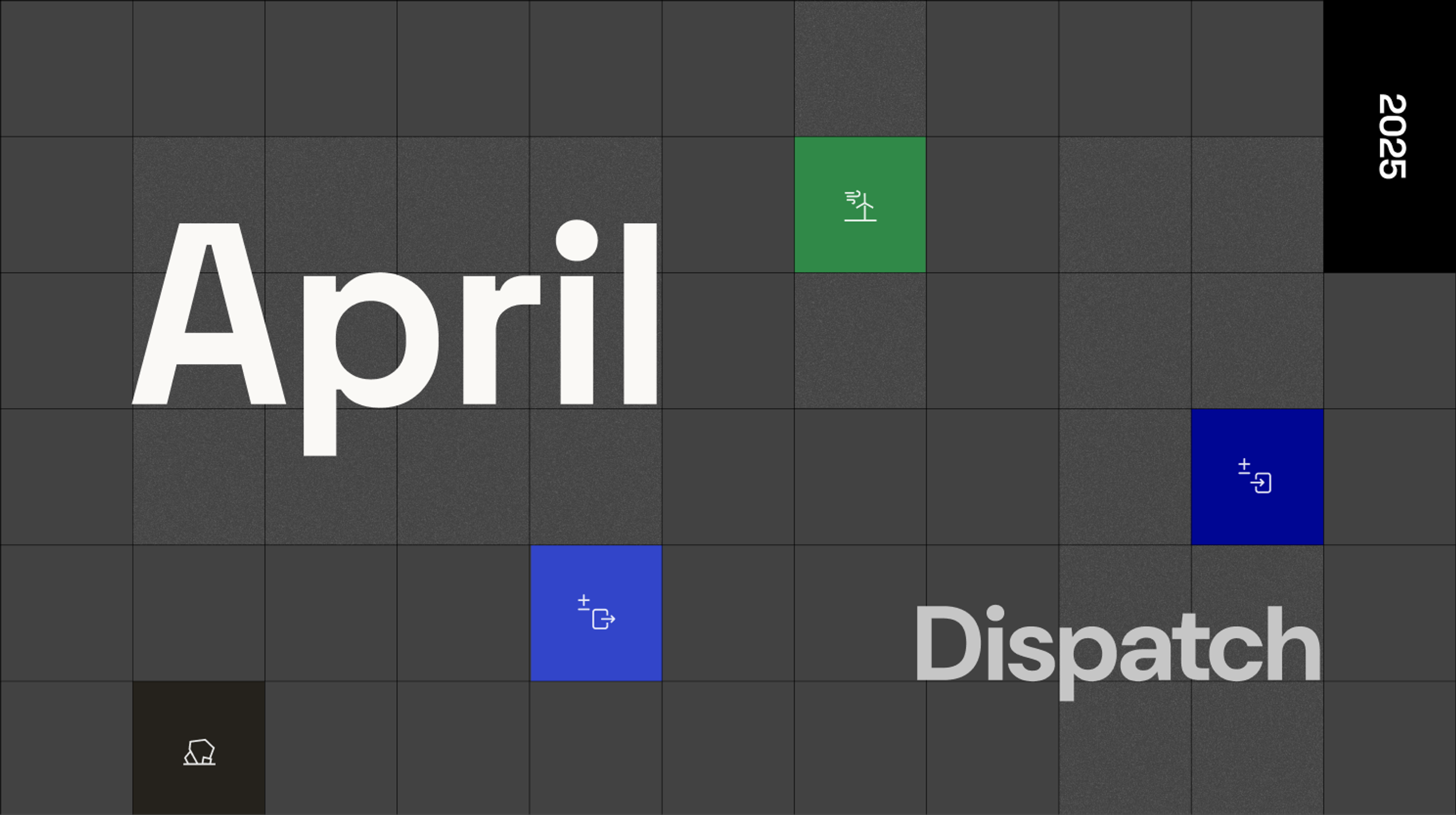Open Electricity Dispatch — April 2025

Each month, we round up the most interesting shifts in the grid – new records, infrastructure updates, and other signals of change in Australia’s electricity system.

April is typically a quieter time for electricity demand and renewable generation, thanks to mild weather reducing both generation and consumption. In fact, April has been the month of lowest electricity usage and wind generation for three consecutive years.
Even so, there was no shortage of momentum. New infrastructure in Queensland led to wind records being broken on multiple occasions, and it was a big month for batteries – four states, and the NEM overall, set new battery discharge highs, with several projects generating for the first time.
And in a major milestone worth noting: the contribution of renewables over a 12 month period exceeded 40% for the first time – marking a meaningful step in the transition.
There were 49 records broken in April. View them all.
Here’s your monthly dispatch from Open Electricity:
Notable Records:
On April 5 at 11:30AM, NSW coal generation dropped to a record low of 1445MW, down 3% from the previous record of 1498MW set in October 2024. You can see a comparison of the records below:

A sharp drop can be observed at exactly 11:30AM. This can be attributed to a fall in generation from AGL’s Bayswater Power Station. As of recently, Bayswater is capable of efficiently powering off for short periods of time in order to avoid negative prices, though from the bidding leading up to the event, it is more likely this decrease is due to an unplanned outage:

Batteries smashed the daily discharge record three times in early April, peaking at 4,380MWh on April 5. This represents an 18% increase on the previous record from October 2024. The jump was driven by new batteries, as we can see from change in generation across the two days.
Here you can see all batteries for which the absolute change in generation was greater than 100MWh:

Blyth, the unit with the greatest change, is a 281MW battery located in the mid-north SA. Ranked as the fifth largest battery in Australia, it first generated in August 2024, though was only recently fully commissioned. It accounted for 467.92MWh of the total 685MWh increase.
Western Downs – which represent the fifth largest increase – is also quite new, with the first generation recorded in June 2024.
At 5:45pm on April 19, wind contributed 2147MW, just over 1% higher than the previous record of 2121MW at 11:45pm on July 19, 2023. South Australia breaking a wind record in April is rare, and looking at the generation by unit, it is clear wind conditions are not the cause.
The Goyder South Wind Farm will be the largest wind farm in South Australia, with Stage 1A completed and Stage 1B recently installing its final turbine. Goyder South wasn't generating during the earlier benchmark and contributed 279MW to the new peak, while most wind farms saw a decline in generation relative to the previous record.

On April 12, wind contributed a total of 18,429MWh to the Queensland grid, greater than the previous record of 17,591MWh set earlier in the year on March 27 – an increase of over 4%.
One contributing factor to recent growth in Queensland wind generation is the addition of Clarke Creek, currently a 346.5MW facility that began generating last October and is undergoing commissioning. Clarke Creek is expecting to add an additional 103.5MW of capacity later this year. There was also a slight net increase in generation from other existing facilities, although the changes varied significantly by site.

Facilities Update
WEM battery enters the Grid:
Stage 2 of the Collie BESS recorded its first generation into the WM on April 4, just short of a year after construction commenced. The 341MW/1363MWh facility is owned by Neoen, a French developer that owns some of Australia’s early large batteries such as the Victorian Big Battery and the Hornsdale Power Reserve, colloquially known as the Tesla Big Battery.
The growth of batteries in Western Australia has been particularly fast, with only one battery (Kwinana Stage 1) operating before 2024. Collie Stage 2 is the fourth battery to enter the grid, with two more slated to begin generation this year.
Solar construction in Victoria:
Two solar farms have begun construction in Victoria, the Fulham Solar Farm and the Horsham Solar Farm. Each of these have an associated battery, with the 80MW Fulham Solar Farm accompanied by a 64MW/128MWh BESS and the 119MW Horsham solar farm accompanied by a 100MW/200MWh BESS. This follows the commencement of construction for the Lancaster Solar Farm in late March, and Goorambat in October 2024, bringing the committed solar capacity in Victoria to 555MW with 1479MW currently operating.
Victoria BESS has recorded its first generation:
The Latrobe Valley BESS, owned by Tilt Renewables, first contributed to the NEM on the 9th of April. This is the second battery, after the Koorangie BESS to enter Victoria in 2025, with two more – the Mornington Battery and the Melbourne Renewable Energy Hub (MREH) – expected to commence this year. While Latrobe and Koorangie are of comparable size to existing batteries, Mornington and MREH are slated to be Victoria’s largest in terms of storage capacity.
See all 49 records and the latest facilities updates at Open Electricity.
If you’ve subscribed to OpenNEM or Open Electricity email updates in the past, we highly recommend signing up again (in footer). We’re rebuilding our list from scratch, and we don’t want you to miss out.

